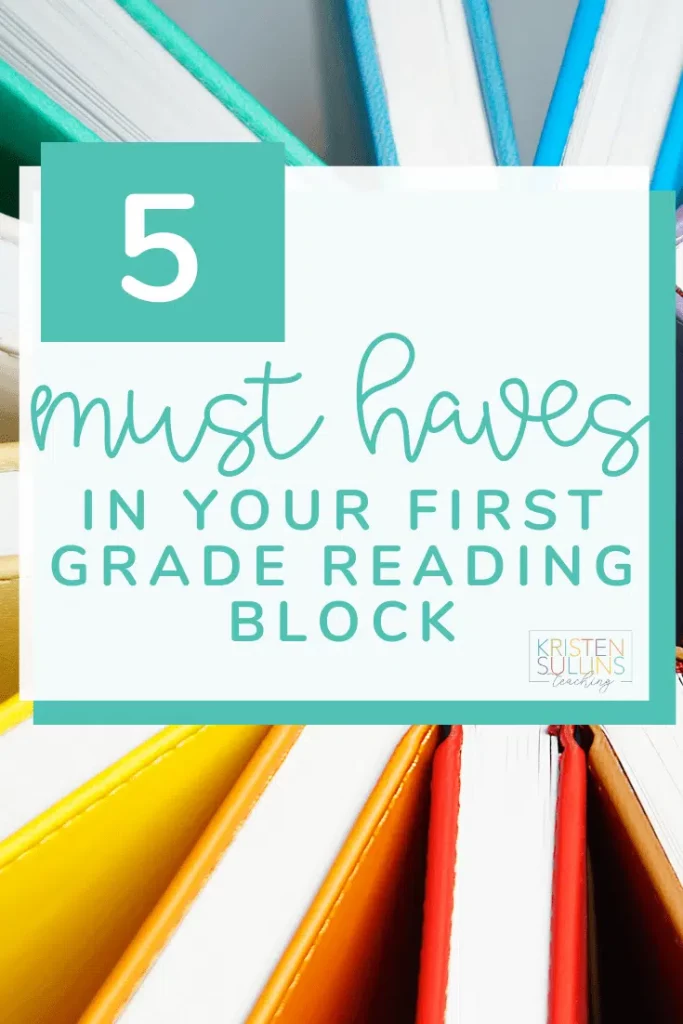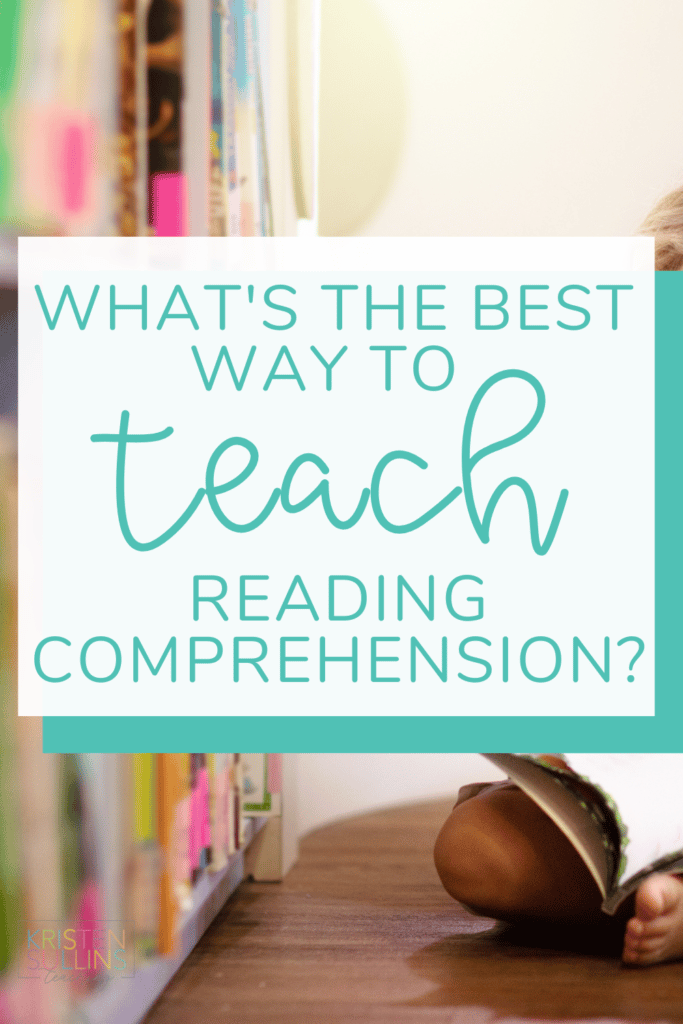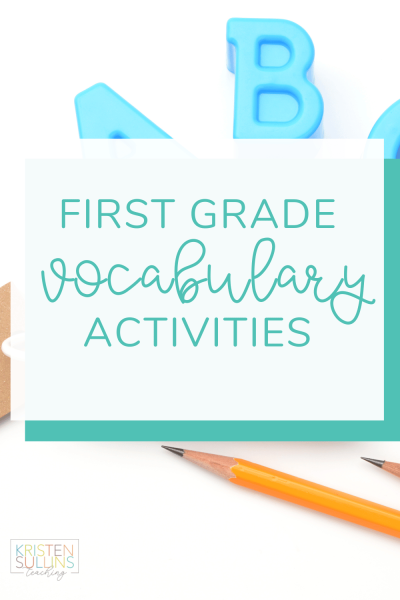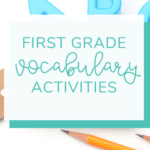What are vocabulary strategies and how do you use them in first grade?
Vocabulary is, simply put, the words we use! Growing a student's vocabulary is an important task as a first grade teacher. There are many strategies for increasing a student’s individual vocabulary knowledge, also known as lexicon. Helping students learn, understand, and use new words will ultimately help them with reading comprehension; which is our goal right?? Reading comprehension is the finish line, the ultimate goal of the teaching of reading. Vocabulary instruction is just one of the many components to help students reach “the finish line”.
There are a variety of strategies teachers can use to enhance student’s vocabulary. From reading aloud and teaching how to use context clues to learning about root words and how to break words apart. One way I have found not only effective in teaching vocabulary, but fun, is an action thermometer. I got the idea back when I was student teaching and have adapted it and used it in a variety of ways since. I’ve continued to call it an Action Thermometer, even though it is a lot more than that.
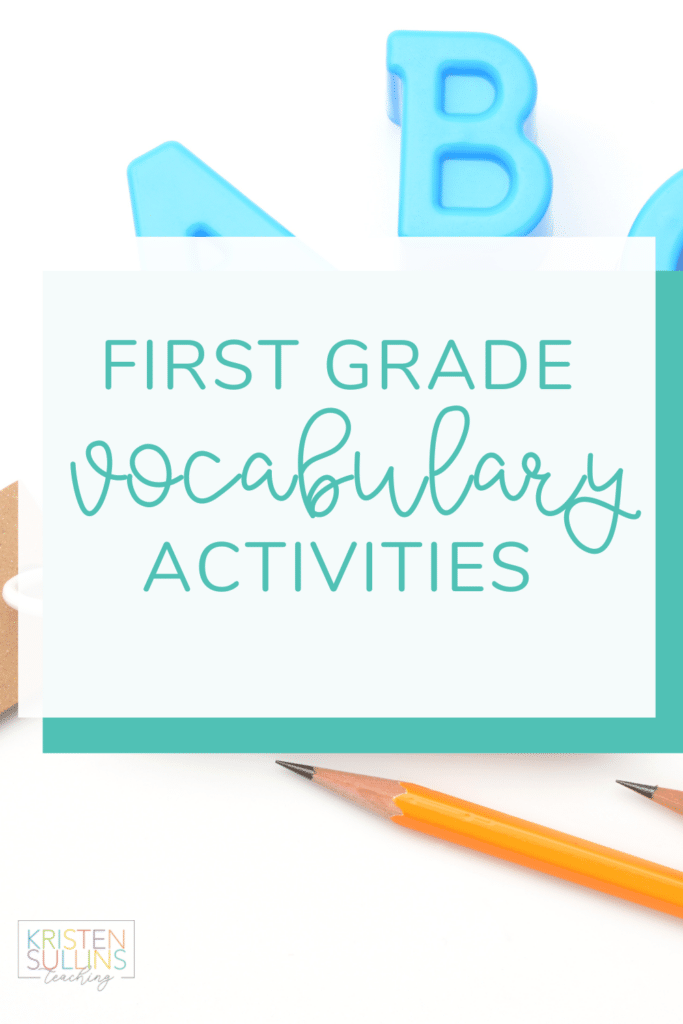
Vocabulary Strategy: Action Thermometer
What is an Action Thermometer?
Simply put, it is just a way of gauging student opinions about a subject/book/etc by having them move around the room. Oftentimes students are responding to a given statement. Students who agree with the statement move to the front of the room, the middle of the room is for those who are unsure, and the back is for students who disagree with the statement.
How do I use an Action Thermometer to enhance vocabulary?
I call this whole process an action thermometer, but in reality the action thermometer is only the intro. It’s just nice to give the whole thing a name, and I’ve stuck with it all these years, why change now?!
How do I start?!
There is prep work to do before starting these lessons (no surprise there). Is there anything in teaching that you can just jump in without preparing?! Haha. I wish!
Here is what you need to do:
First: select a read aloud
We use the backwards by design model when planning at my school. We start with the standards, and work back to each unit, discovering and deciding how we are going to cover each standard. Then we make a plan for lessons and select read alouds that meet those requirements and will best help our students learn each standard. So, we typically have our read alouds selected for each unit.
Second: find and select Tier II words
Search each read-aloud for tier II words. ((I am not going to get into the difference between Tier I, II and III words right now; there are a lot of resources out there though that can help if you don’t know what the difference is))
Selecting your vocabulary words is very time consuming, but once you have them selected write or tape those words to the inside cover! Then you’re ready to use it again in the future without the trouble of searching for the vocabulary words.
At the start of the year I focus on 1-3 vocabulary words a week. Near the end, however, I try to focus on 3-5. It also depends on the book I have selected for the action thermometer. Some books have more vocab words than others.
Third: select an intro question or statement
As teachers when we introduce a read-aloud, we often prompt our students with a statement or a question. This is how I start, my action thermometer! I get a feel for how my students are feeling toward a particular topic or I get an idea of my students' understanding toward that topic. So, after I have selected my tier 2 words, I then decide on how I am going to introduce this book to my students. You can write the statement or the question and tape it to the inside of your book just like with the vocab words!
Fourth: prepare a vocabulary page/book
This looks different, for me, from year to year. Some years I’ve created a vocabulary notebook for my students to record different words, other years I’ve provided a vocabulary work page that is 3-hole pinched and is added to a folder with brads or small binder.
Just select how you want your students to keep up with their vocabulary words and do what works best for you and them.
The "Action Thermometer" Vocabulary Strategy in First Grade
So here is a rundown of my vocabulary lesson using an action thermometer. Like I believe said before, I only do this once a week. It is about a 45 minute lesson, sometimes less, and this includes the read-aloud.
Introduction: This is your typical book intro, minus any vocabulary introduction (that’ll come in a bit). Show the students the book, read the title/author, ask questions and prompt predictions. *students are typically at the rug during this time
Statement/question: Have your students put their thinking caps on. Say the statement or ask the question and then write it on the board. Have everyone stand up! Re-read it and then have students MOVE!
Action Thermometer:
- Students move around the room – agree/disagree/unsure
- Pair and Share – students turn to a neighbor who has selected the same opinion and share why they made that choice. I often have a few students raise their hand to share what was discussed.
Vocabulary Intro: as students are returning to the rug, write or display the new vocabulary words. Introduce one word at a time, saying it clearly and even slowly the first time. Have students repeat the word back to you and then provide them with a student friendly definition. You may also use visual aids to assist with student understanding.
- This is a good time to allow students to go back to their desks and write the new vocabulary words in their vocab notebook or on their vocab page.
Explain that these words are going to be found in this read aloud, so it’s important to understand its meaning before starting the book.
Read-aloud: you know this part! Read the book, think aloud while discovering new things/ask questions and reflect. I often stop during the book once I’ve reached each new vocabulary word and repeat the word for the students to make the connection between definition and use in the story.
Vocabulary groups: Now that the story is done, we want students to learn the new words more efficiently. I separate my students into groups; one group for every new vocab word. They are given one piece of anchor chart paper (because it’s fun to make things big!) and the groups then:
- Write the word
- Write a definition
- Use the word in a sentence
- Draw a picture to go along with the word or sentence
- SHARE! They then present their word to the class and show their anchor chart.
*optional: have each group act out the word
Wrap it up: students then return to their desks where they complete their vocabulary entry into their vocab notebook or worksheet. They can use the provided anchor charts to help them.
Anchor charts tend to take up a lot of space, so after everyone has recorded their vocabulary information I get rid of the anchor charts. I do like to have a place in my classroom where the new vocabulary words are displayed, but that doesn’t always workout. That is why the vocab notebooks/binders are so important and useful! They are a great resource for students.
My students really enjoy our vocabulary lessons and so do I! It keeps us moving, talking and makes learning fun.
Vocabulary & Book Study Activities
This link will take you to my favorite vocabulary and book study activities!
Book studies include vocabulary cards and “What Does It mean?” worksheets!


